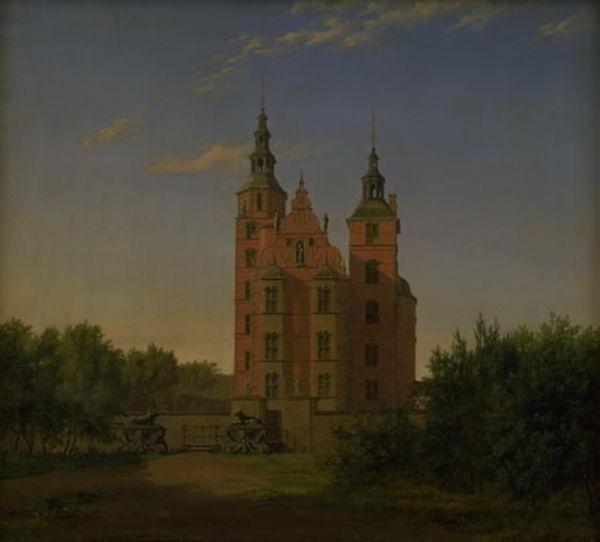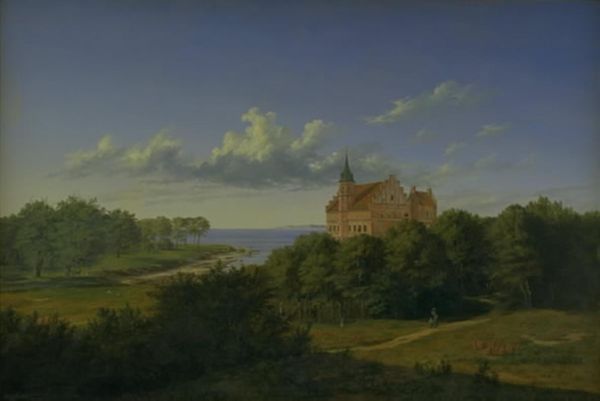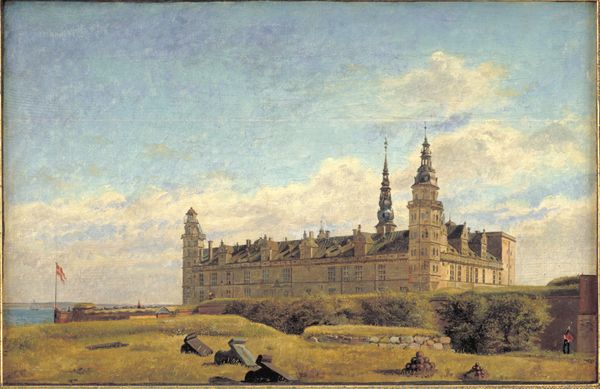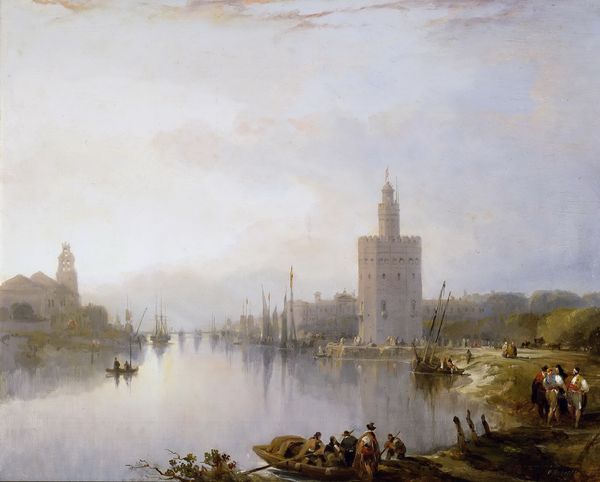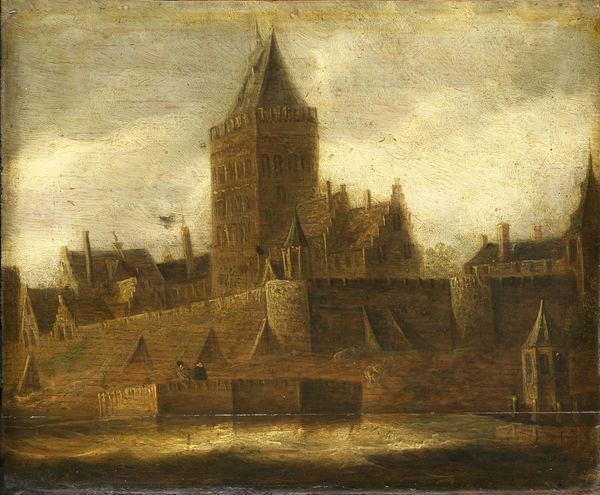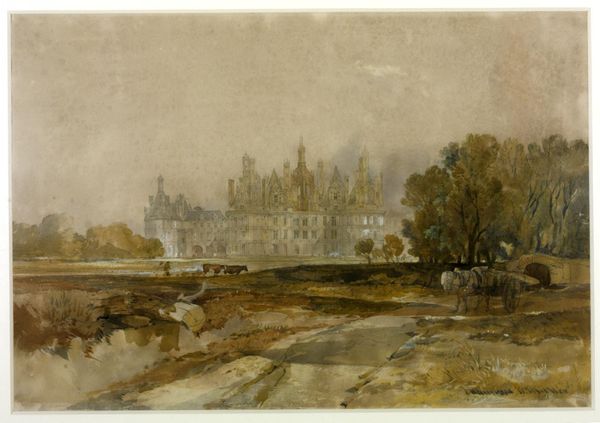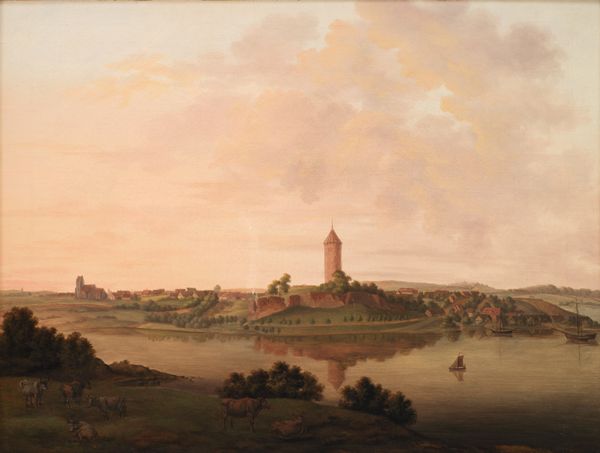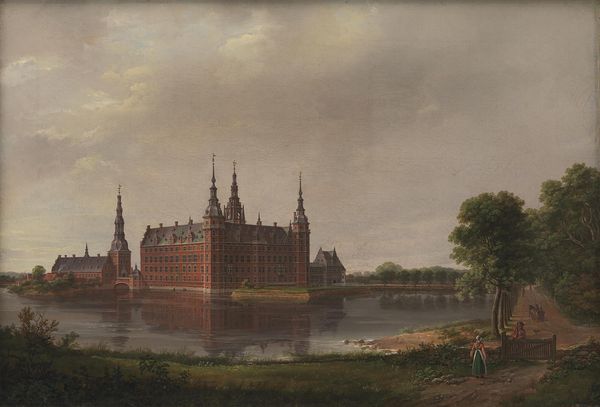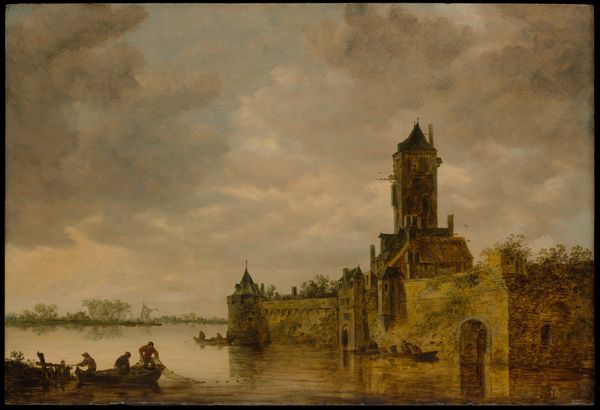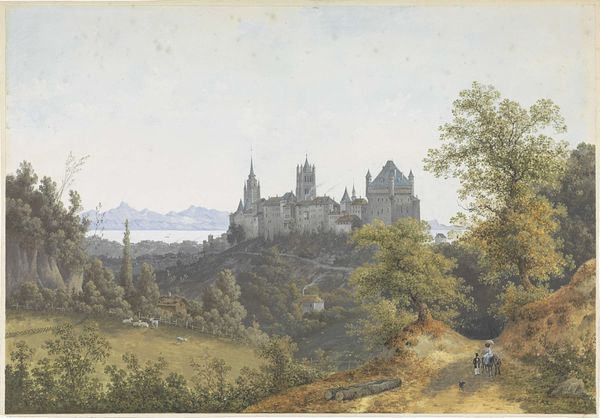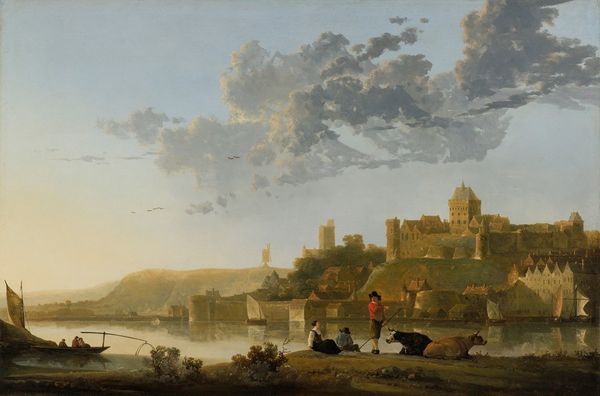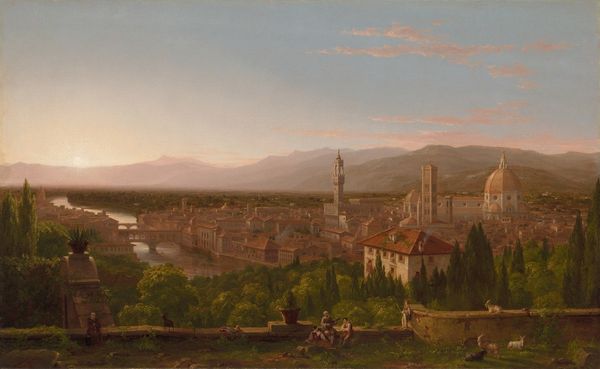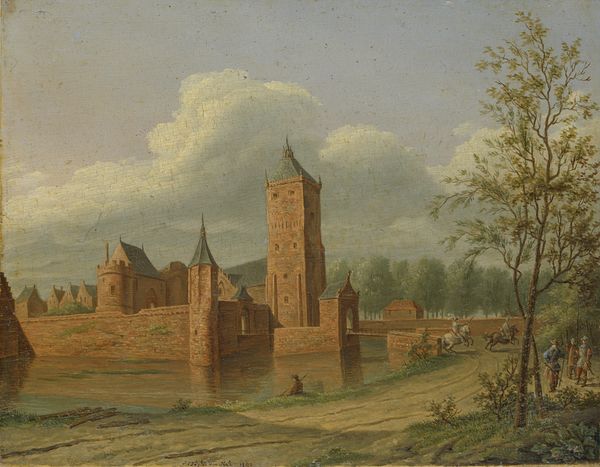
watercolor
#
landscape
#
watercolor
#
romanticism
#
fog
Dimensions: 113 cm (height) x 163.5 cm (width) (Netto)
Editor: Here we have Ferdinand Richardt's watercolor from 1848, "Kronborg seen from the North Bastion." It’s a brooding depiction of the castle; there's this quiet strength about it. How do you interpret this work, particularly within its historical context? Curator: Richardt's choice to depict Kronborg at this moment isn’t just aesthetic. Think about the year – 1848, a year of revolutions across Europe. Representing Kronborg, a symbol of Danish power and history, during this period becomes a statement. Do you see the fog in the background almost swallowing up the ships at sea? Editor: I do, yes. It feels almost ominous. Curator: Exactly! Richardt subtly reminds us of Denmark's maritime power but also suggests its vulnerability, using Romanticism's aesthetics. This wasn’t just about pretty landscapes; it was about visually negotiating Denmark’s identity and geopolitical standing. Editor: So the landscape isn't just background, it’s actively contributing to the message. Are the cannons arranged in the foreground another clue to its meaning? Curator: Precisely. The cannons assert power but they're static, almost decorative. The scene brings forth so many considerations about gender, race, and even the ruling class, but how effective would this Romantic symbol have been for someone dealing with class division, enslavement, and other issues in Denmark? Editor: I hadn't considered the painting in light of contemporary conversations about nationalism and power. It's prompted me to rethink what I initially considered to be merely a beautiful, tranquil painting. Curator: Richardt encourages us to interrogate not just Denmark's identity in the mid-19th century but to view those historical discussions from modern global power structures. It becomes about historical context, aesthetic presentation and contemporary conversations about oppression. Editor: Thank you. That adds a lot of depth and raises really important questions for understanding the work and it's enduring relevance.
Comments
No comments
Be the first to comment and join the conversation on the ultimate creative platform.
